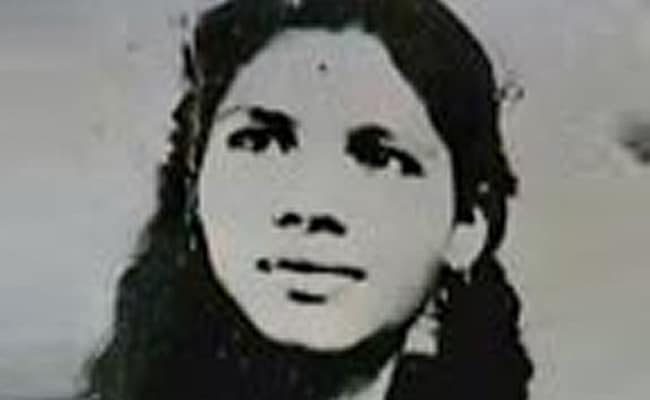7 years ago
New Delhi:
In a landmark verdict, the Supreme Court today ruled that individuals had a right to die with dignity, allowing passive euthanasia with guidelines in a landmark verdict. The top court also permitted individuals to draft a "living will" specifying that they not be put on life support if they slip into an incurable coma.
The top court has said the guidelines will remain effective till a law is in place. A 'living will' is made by a person, in his normal state of mind, seeking voluntary euthanasia in case of terminal illness, if he or she reaches an irreversible vegetative state.
The top court has said the guidelines will remain effective till a law is in place. A 'living will' is made by a person, in his normal state of mind, seeking voluntary euthanasia in case of terminal illness, if he or she reaches an irreversible vegetative state.
Here are the LIVE updates on the landmark Supreme Court verdict on passive euthanasia:
 Aruna Shanbaug And The Right To Die With Dignity: Top Court Allows Passive Euthanasia
Aruna Shanbaug And The Right To Die With Dignity: Top Court Allows Passive EuthanasiaThe Supreme Court verdict allowing passive euthanasia takes us back to Aruna Ramchandra Shanbaug, a nurse at the KEM Hospital who lay like a vegetable, at ward number 4 for 42 years. A ward boy had sexually assaulted Aruna on November 27, 1973, when she was changing her clothes after work. She was tied with a dog chain round her neck while she was assaulted. Aruna was found next morning in a pool of blood; the chain round her neck had cut off oxygen supply to her brain for over 8 hours.
What led to the Supreme Court to recognise 'living will':
- May 11, 2005: SC takes note of PIL of NGO 'Common Cause' seeking nod to allow terminally-ill persons to execute a living will for passive euthanasia. It seeks the Centre's response on the plea which seeks declaration of 'right to die with dignity' as a Fundamental Right under Article 21 (right to life) of the Constitution.
- Jan 16, 2006: SC allows Delhi Medical Council (DMC) to intervene and asks it to file documents on passive euthanasia.
- Apr 28: Law Commission suggests a draft bill on passive euthanasia and says such pleas be made to HCs which should decide after taking experts' views.
- Jan 31, 2007: SC asks parties to file documents.
- Mar 7, 2011: SC, on a separate plea on behalf of Aruna Shanbaug, allows passive euthanasia for the nurse lying in vegetative state at a hospital in Mumbai.
- Jan 23, 2014: A three-judge bench led by then CJI P Sathasivam starts final hearing in the case.
- Feb 11: DMC files copy of proceedings of International Workshop for Policy Statement on Euthanasia in India and SC reserves verdict.
- Feb 25: SC cites inconsistencies in earlier verdicts on passive euthanasia including the one given in the Shanbaug case and refers the PIL to a Constitution bench.
- July 15: A five-judge bench commences hearing on the plea, issues notices to all states and UTs, and appoints senior advocate T R Andhyarujina as an amicus curiae. He dies during the pendency of the case.
- Feb 15, 2016: Centre says that it is deliberating the issue.
- Oct 11, 2017: Five-judge Constitution bench led by CJI Dipak Misra hears arguments and reserves the verdict.
- March 9, 2018: SC recognises 'living will' made by terminally-ill patients for passive euthanasia and lays down guidelines on procedures to be adopted for it.
Supreme Court lawyer and petitioner Prashant Bhushan:
- Today the Supreme court has delivered historic decision. The constitution bench has cleared all the air on passive euthanasia
- The court has held certain conditions
- Court said any individual has full right to decide that he should not take any kind of medical treatment should not be kept alive on life support system.
- And if that person so decides and his decision is binding on the doctors and his family members have to respect and give effect to his decision
- If a person leaves a living will that if he becomes unconscious and his life can only be prolong by artificial life support systems then that living will should be effective by the doctors and his family
- If a person fell unconscious and has not expressed his will and he can only be kept alive on life support system then the treating doctors and the family members together can decide to withdraw life support system if they feel that the person is in incurable state
- However they have said some medical board being constituted
- It is not clear if the prior permission is required of that medical board, probably not.
 Supreme Court on Right To Die With Dignity: 'Living Will' For Passive Euthanasia
Supreme Court on Right To Die With Dignity: 'Living Will' For Passive EuthanasiaAs per the guidelines of the Supreme Court, a family member or friend of the terminally ill person, seeking passive euthanasia can go to the High Court, which will constitute a medical board that will decide if passive euthanasia is needed.
In 2015, the death of a 66-year-old nurse Aruna Shanbaug, who was sexually assaulted and left in a vegetative state for more than 40 years, had sparked a national debate over the legalisation of euthanasia.
Earlier this year, an elderly couple from Mumbai had written a letter to President Ram Nath Kovind seeking permission for "active euthanasia", involves helping a person die on his or her request "through direct action".
The 'advance directives' can be issued and executed by 'next friend and relatives' of terminally ill people but a medical board to take a final call.
The Constitution Bench has issued safety guidelines on passive euthanasia.
Today's verdict was delivered by a five-judge bench.

